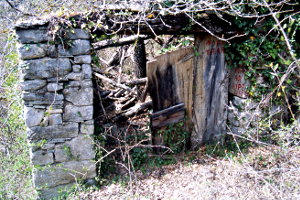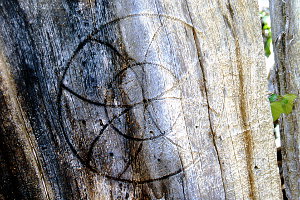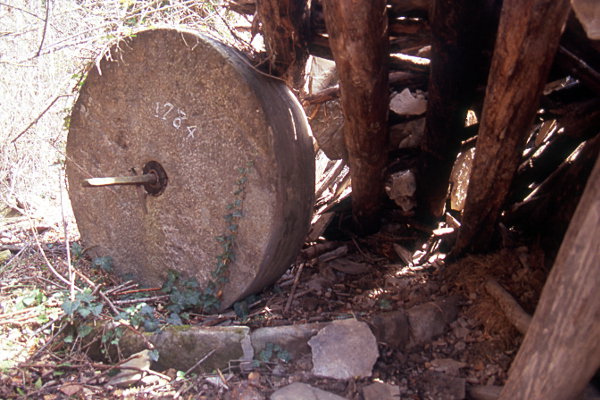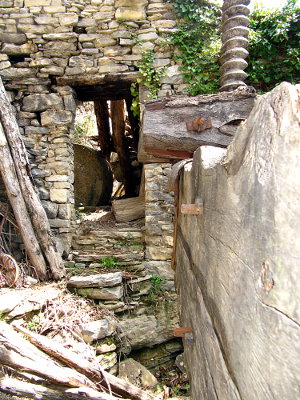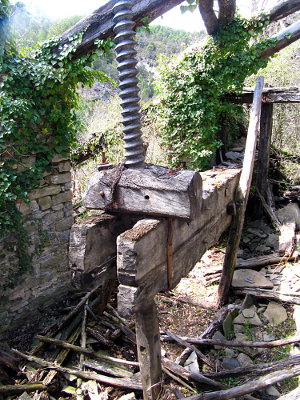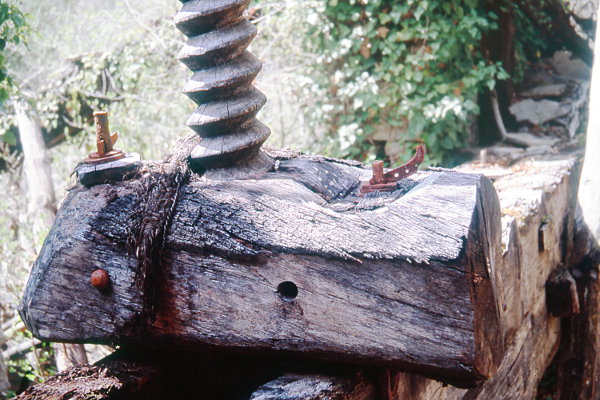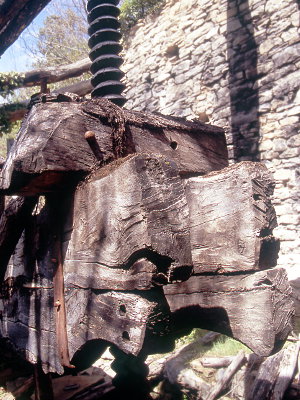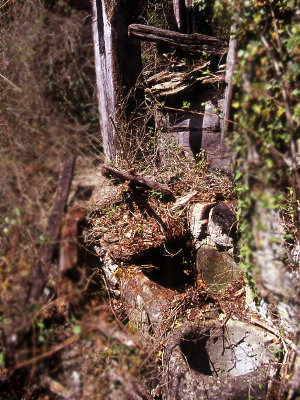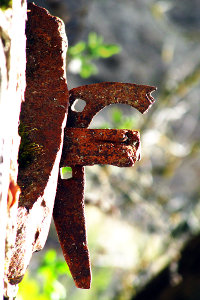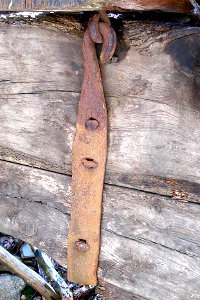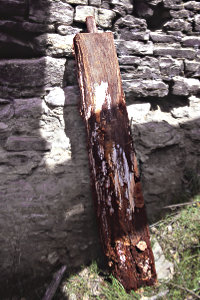Path: Introduction -
Visit the mills; catalogue - Formigales

Mills in Altoaragón - aceitero
Formigales

Formigales is a small village in the La Fueva
region. From L'Ainsa take the road to Campo and after 13 km turn right to Tierrantona. Keep on the
main road until you find Formigales, Troncedo and Graus signposted to the left. Past the village of Formigales
there is a sharp turn to the left; here a track goes down into the valley of the Barranco de Formigales — the
mill of Solanilla is higher up on the same rivulet. Walk the track and you will soon
find some dilapidated shack. Now try to find a weak trail going down: it leads to the mill.
At the time, the building was in a terrible state, but the huge cantilever press was still strong and worth
to be protected and preserved.
Pictures: 13.IV.2012

